Q&A: Dylan Cole
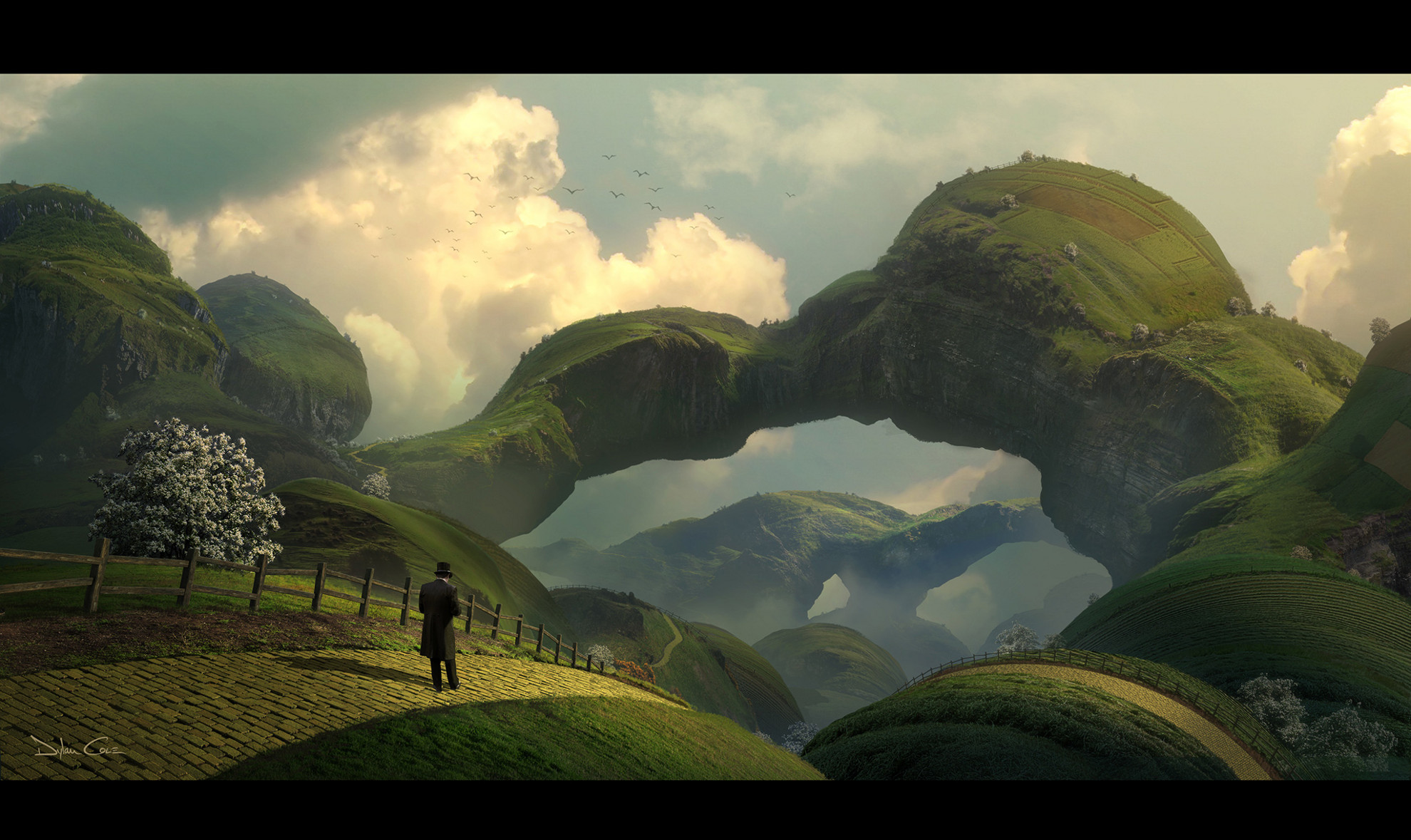
In our series of interviews in the run up to Gnomon Workshop Live, the leading production designer, concept artist and matte painter tells us about his influences, his workflow – and why listening to metal can help your matte work.
 Dylan Cole’s first love was comics, until an early encounter with the Art of Star Wars books turned his career onto a different path. After graduating from UCLA as a fine art major, he sent out portfolios to “dozens and dozens of studios”, eventually getting a call from legendary Illusion Arts co-founder Syd Dutton.
Dylan Cole’s first love was comics, until an early encounter with the Art of Star Wars books turned his career onto a different path. After graduating from UCLA as a fine art major, he sent out portfolios to “dozens and dozens of studios”, eventually getting a call from legendary Illusion Arts co-founder Syd Dutton.
A short stint on The Time Machine was enough to launch his career, and within a year and a half of graduating from UCLA, he was off to New Zealand to be a senior matte painter for The Return of the King. Since then, he has contributed art to over 50 films including Avatar, Alice in Wonderland, and Oz the Great and Powerful.
He is currently working as production designer on Maleficent, an upcoming live-action fantasy thriller based on Disney’s 1959 animated version of Sleeping Beauty, directed by Robert Stromberg and starring Angelina Jolie.
Dylan is also one of the ten industry stars hosting sessions at Gnomon Workshop Live, which takes place at the Gnomon School of Visual Effects in Hollywood from 21-22 September. In the run up to the show, we caught up with Dylan to find out more about what he will be showing in his presentation, and get his tips for young artists.
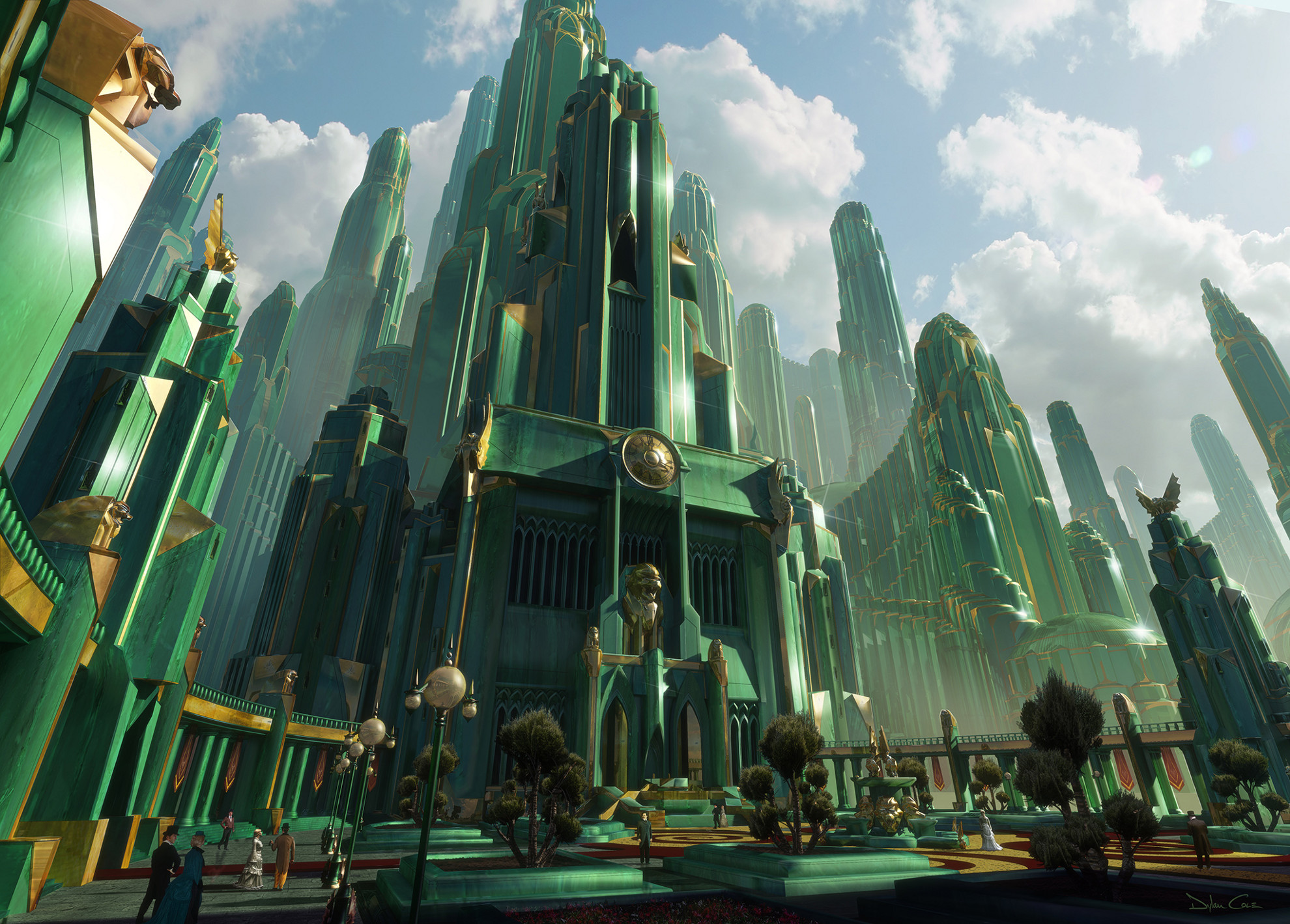
An image of the Emerald City from Oz the Great and Powerful. In addition to Oz, Dylan Cole has contributed art to over 50 movies, including The Lord of the Rings: The Return of the King, TRON: Legacy and Avatar.
CG Channel: What are you going to be doing in your session at Gnomon Workshop Live?
Dylan Cole: I’ll present my workflow. I’m going to look at how 3D impacts design, so I’ll go through a few pieces where I’ve used 3D, and look at how I do some simple modelling, take renders and paint them up in Photoshop.
CGC: You use Cinema 4D for 3D work now. How did you come to start using it?
DC: I started using it in matte painting because it has great camera projection tools. That was around 2006. But you need geometry to project onto, so I started modelling … and became comfortable with it that way.
CGC: Your career began at a point when most matte work was 2D. Can you still get into the industry with just 2D skills, or do you need to learn about 3D early on?
DC: I’d recommend learning both. Too often, I see people using 3D as a crutch – people who can’t draw, or who [haven’t mastered] perspective – and I’m certainly not advocating that, but as a tool it’s absolutely necessary these days: even in the art department, which was always the last bastion of 2D work.
CGC: Is there a ‘standard’ 3D tool for concept work, as Maya might be for visual effects?
The thing about [concept art] is that it’s not a big pipeline yet, so it’s whatever you’re most comfortable with. People use all of the common packages: 3ds Max, Maya, and obviously for concept work, a lot of ZBrush. The two most common packages in art departments are probably Modo and ZBrush.
CGC: The FAQs section on your website lists some of the questions you often get asked by young artists. Is there one in particular we can get out of the way before Gnomon Workshop live starts?
DC: Everyone wants to ask technical questions like, ‘What hardware are you using?’. People want the secret button. But there is no secret button: it’s about good concepts, and practice, and learning along the way.
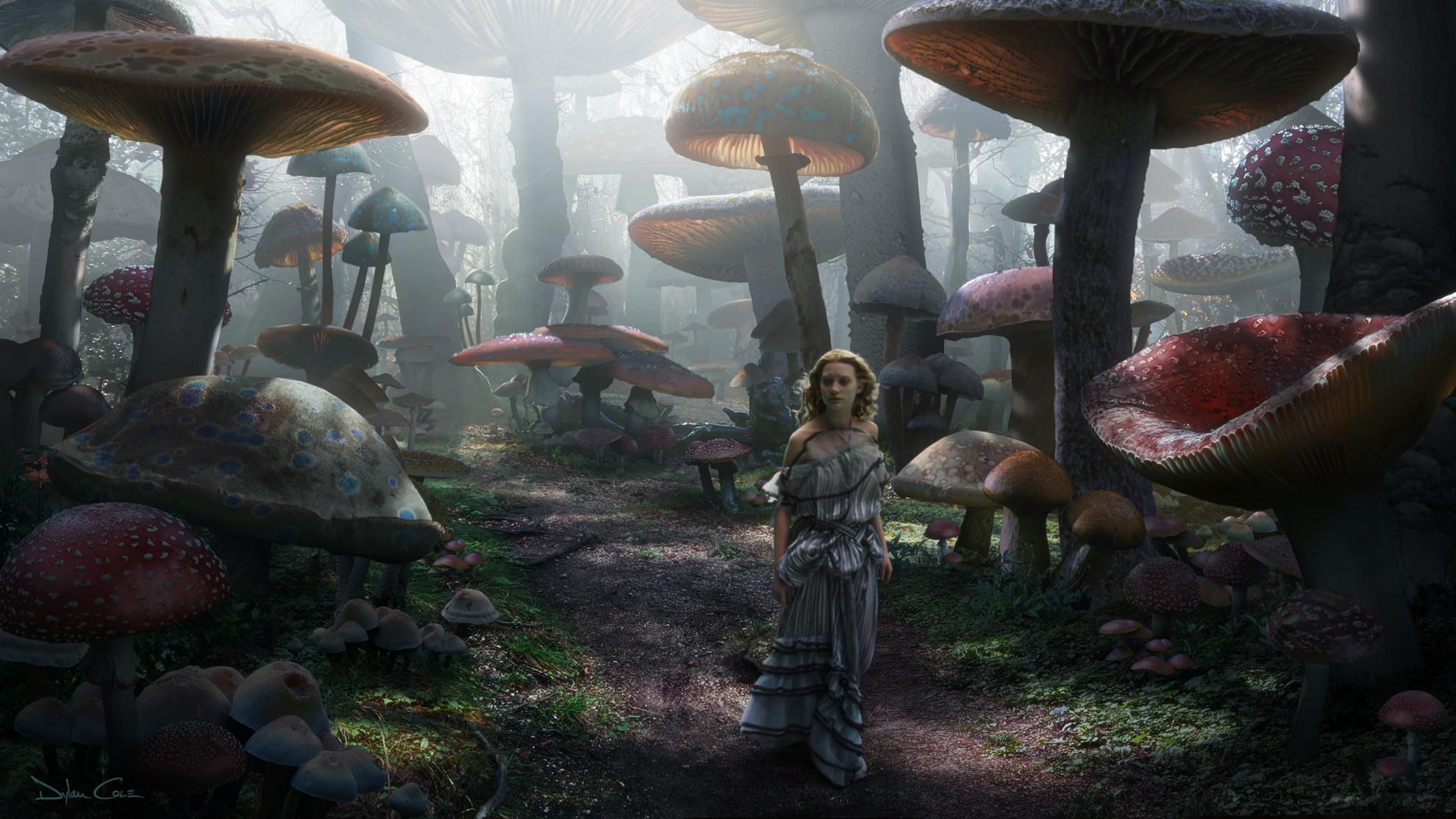
Tim Burton’s Alice in Wonderland: another major movie on which Dylan worked. He is currently wrapping up work on Disney’s live-action fantasy Maleficent, for which he has completed over 80 separate matte paintings.
CGC: What are you working on at the minute?
DC: We’re wrapping up on Maleficent. I’m still doing some art direction and designing some virtual sets, and I just finished up [on the matte work]. I’ve done about 80 matte paintings on the show. It’s classic Disney material, but done in a photorealistic live-action way.
CGC: Is it your reimagining of the 1959 Disney animation, or a new take on it?
DC: It’s definitely a take on it, but not literally so. What worked so well with the original was the beautiful stylization, and our challenge has been how to honor that, but still have it be fresh and exciting in a live-action film.
CGC: How did it feel to work on such an iconic property?
DC: I think it’s fantastic. I’m a gigantic fan of Eyvind Earle. Thankfully, we aren’t trying to literally adapt [his work], so we aren’t beholden. There are certain environments where we’re more reverential than others.
CGC: You co-founded your own company, Hydra Entertainment, with Maleficent director Robert Stromberg. What is Hydra working on right now?
DC: We have a slate of exciting projects, some from our company founders, some we are developing with outside parties. My children’s book, The Otherworldly Adventures of Tyler Washburn, is under the Hydra banner, and we’re trying to get that off the ground [as a movie project]. We’re working on the script, and have some potential producing partners.
CGC: What made you set up the company?
DC: Robert and I had done a lot of pitch art for certain projects, and we felt several times our artwork helped get these big projects greenlit, so we looked at each other and said ‘Why don’t we do this for ourselves?’
[Hydra co-founders] The Third Floor had experience doing pitch-viz – taking pre-viz and doing these little pitch trailers for projects – and with us all being friends, we thought we’d be crazy not to try this.
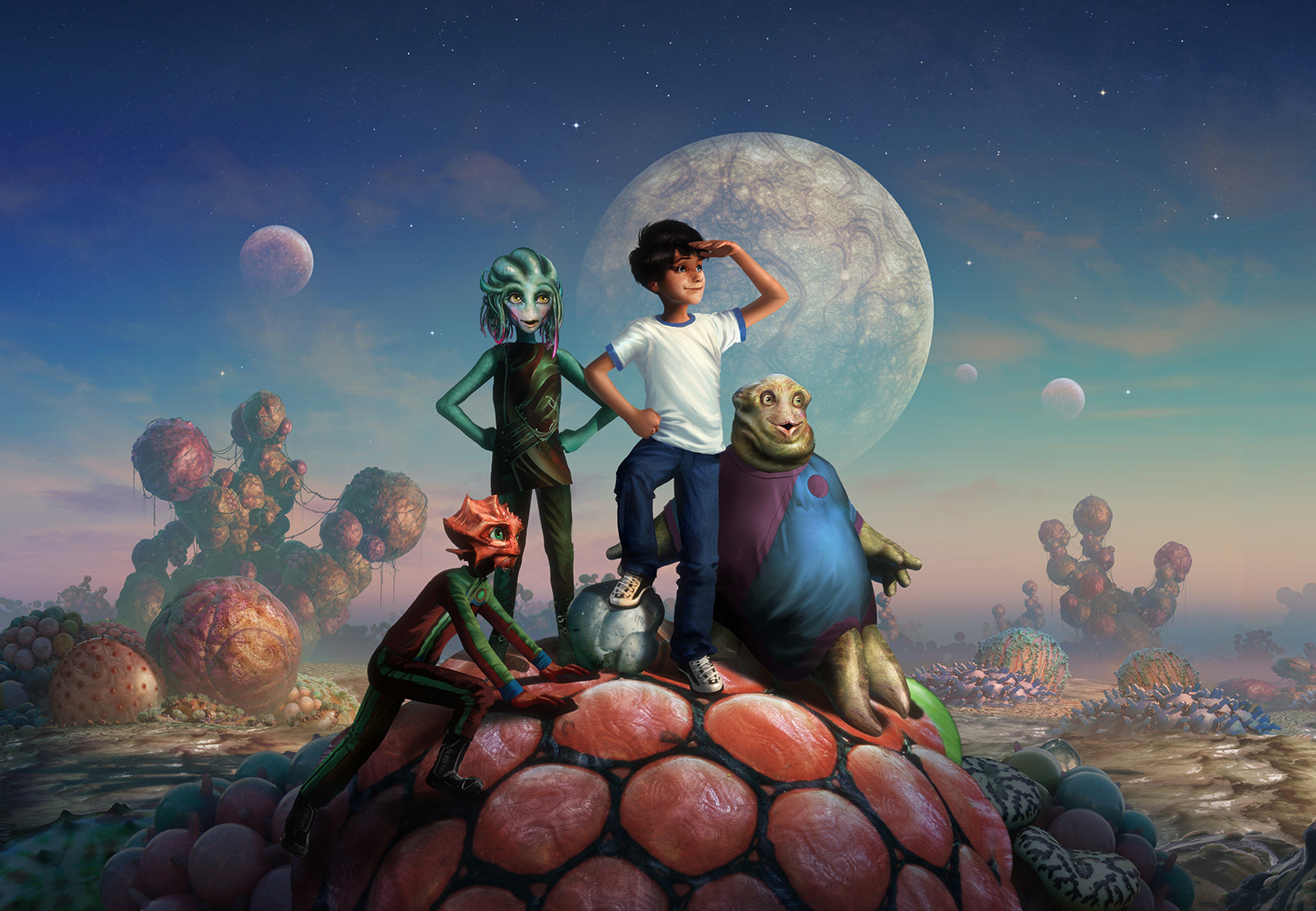
The Otherworldly Adventures of Tyler Washburn. Dylan’s first children’s book was a departure from his usual work, but the experience has fed back into his matte and concept work in valuable ways.
CGC: Do the things you learn on other projects feed back into your matte and concept work?
DC: Very much so. The Otherworldly Adventures of Tyler Washburn is a whole new style for me. Working on a children’s book, I learned a lot about characters and doing things a little more simply, although the actual 3D work is some of the most complicated I’ve ever done.
CGC: Are side projects like this valuable to artists earlier in their careers?
DC: I’d highly recommend them – earlier or later. The most fun I’ve had is when I’ve bounced from a film to a TV commercial to a videogame. It keeps things fresh.
CGC: So what happens if you’re working on a long project? Do you have any tips for staying motivated?
DC: Embrace the different phases. Feed off different artists. I’ve worked a lot remotely, but I love to work on site because of the other artists. Even if what you’re doing isn’t that exciting, at least you can learn from other good people. And whatever happens, it beats flipping burgers.
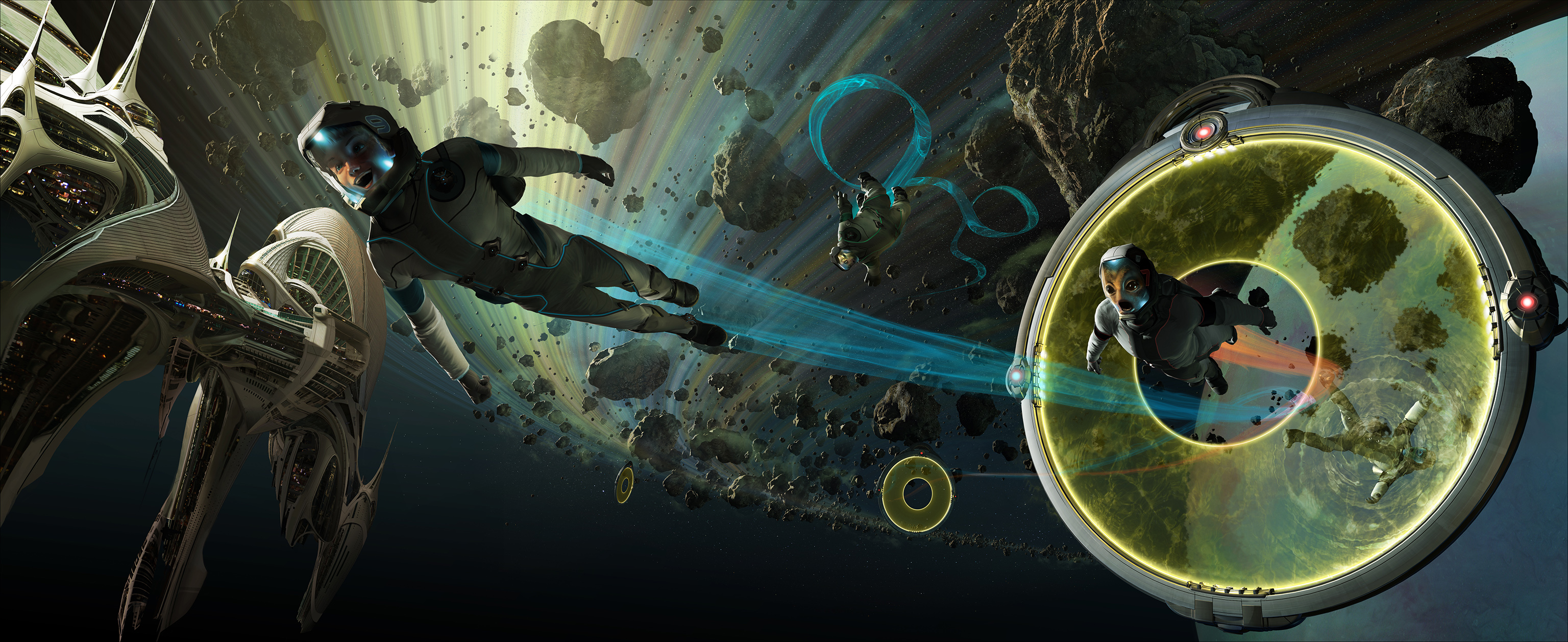
Another image from The Otherworldly Adventures of Tyler Washburn. Dylan discusses how the art for the book was created in a recent interview with Studio Daily.
CGC: Is getting better simply a matter of practice, or is there something more structured you can do to improve your skills?
DC: I’d recommend bouncing around between drawing, simple greyscale value studies for composition and basic design, and colour studies. If you try to jump into full-blown colour illustrations, you’re trying to solve design, colour and composition [simultaneously]. Trying to create a good painting and create a good design at the same time is really hard, and something I still struggle with quite a lot.
[And working digitally helps]: analogue skills are the basis of drawing, composition and painting, but you can learn a lot faster working digitally because you can do so many more paintings. It’s a mileage thing.
CGC: That’s interesting, because you’ve talked about the influence that fine art has had on your work. What can matte painters learn from gallery paintings?
DC: I was introduced to the Hudson River School by Syd Dutton. They would have made amazing matte painters. I just love the mixture of drama and realism they achieved through lighting. [Albert] Bierstadt and [Frederick Edwin] Church, and their big landscape paintings, are my go-tos for pools of light; [ways to lead] your eye around the painting. They’re these big epic scenes, yet there’s no doubt about what the focus is.
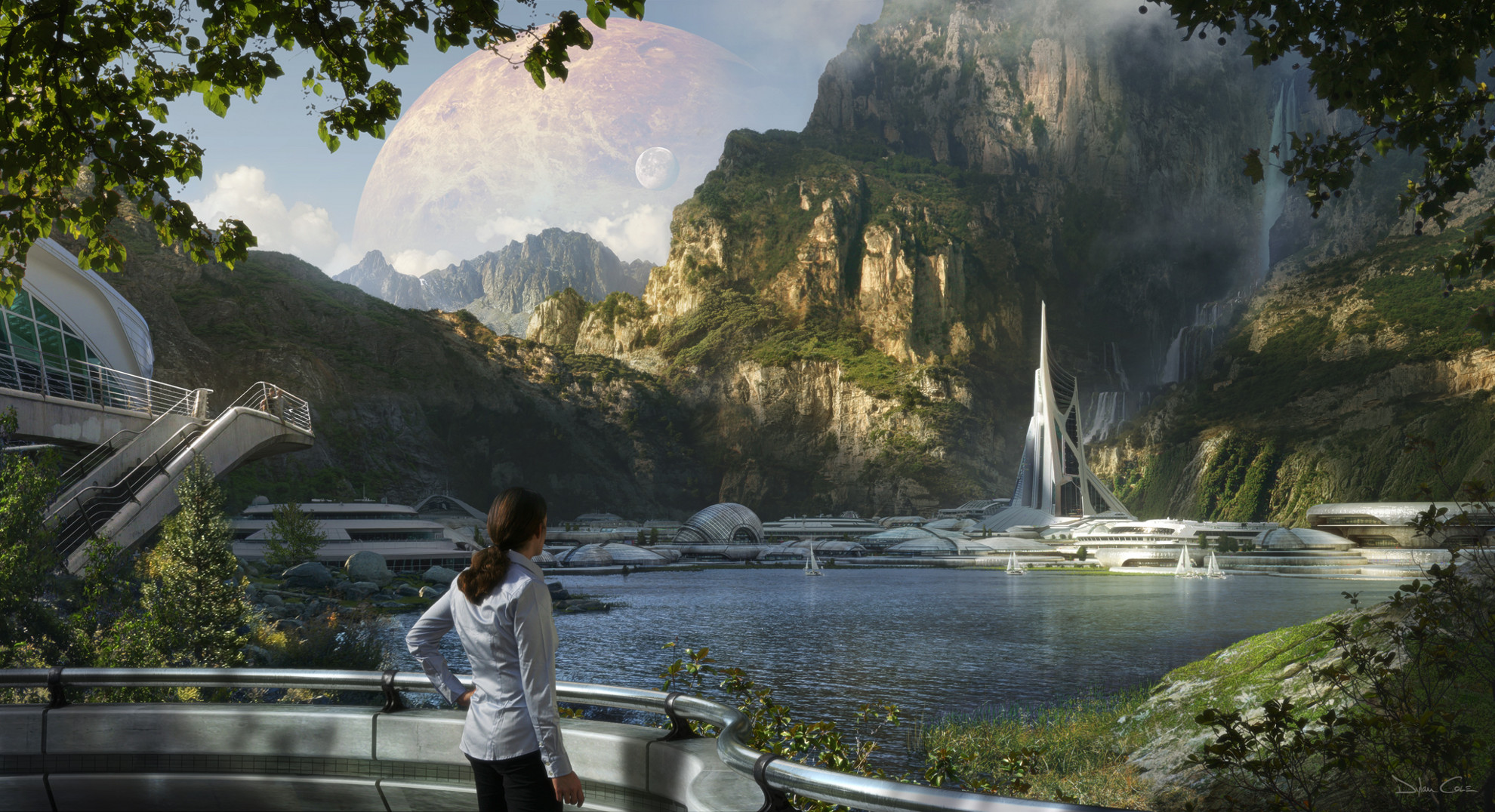
A piece of personal artwork. Landscape paintings from the nineteenth-century Hudson River School have been a major influence on Dylan’s work, as has the work of Orientalist painters like Jean-Léon Gérôme.
CGC: Do enough young artists know their art history?
DC: It’s not fair to [generalise] about all young artists. I learned about a lot of great illustrators from artists in school. But I definitely see a lot of young artists who don’t look earlier than 1977, when Star Wars came out.
I wanted to be Ralph McQuarrie when I was a kid, but then I expanded my view and became… whatever I am today. But whatever that is, it isn’t just a Ralph McQuarrie clone. It’s like Ryan Church is incredibly popular today. You see a lot of kids trying to be Ryan Church.
CGC: So how important is it to have a signature style?
DC: It’s easier to have an identifiable style if you’re a comic book artist. Doing what I do it’s less [possible], although people tell me they can identify my work. It’s a kind of heightened reality, I would say.
But I think it’s more about consistency, so people know they can depend on you for a certain look. That’s just professionalism. But at the same time, you have to be versatile, to adapt your subject matter and style as projects demand. No one wants to be a one-trick pony, right?
CGC: And presumably speed is important too?
DC: Oh, absolutely. Even my big finished pieces are usually done in a day or two. Matte painting is a bit different, but with concept art, you generally need to do at least a painting a day.
CGC: Do you have any tips for young artists who want to get faster?
DC: It’s really just down to experience: knowing what works and what doesn’t. And fast music. I’m a huge metal fan, so that helps! But it’s also about confidence, not having self-doubt, not questioning every decision. It’s just one painting, and if it doesn’t work out, you can do another one.
CGC: If there was one thing you could tell your younger self, what would it be?
DC: Like a lot of young artists, I’d throw the kitchen sink into every painting, just because I could. It’s taken me ten years in my career to be impressed by simplicity. It’s as much about what you don’t put in as what you do.
But I think it goes back to what I was saying about there being no secret buttons. It took me a long time to learn, but it’s good that it took me a long time to learn. I don’t regret it.
Visit Dylan Cole’s Facebook profile
Order The Otherworldly Adventures of Tyler Washburn on Amazon.com
Register for Gnomon Workshop Live ($250 for a two-day pass, $150 for students)
Full disclosure: CG Channel is owned by the Gnomon School of Visual Effects.
